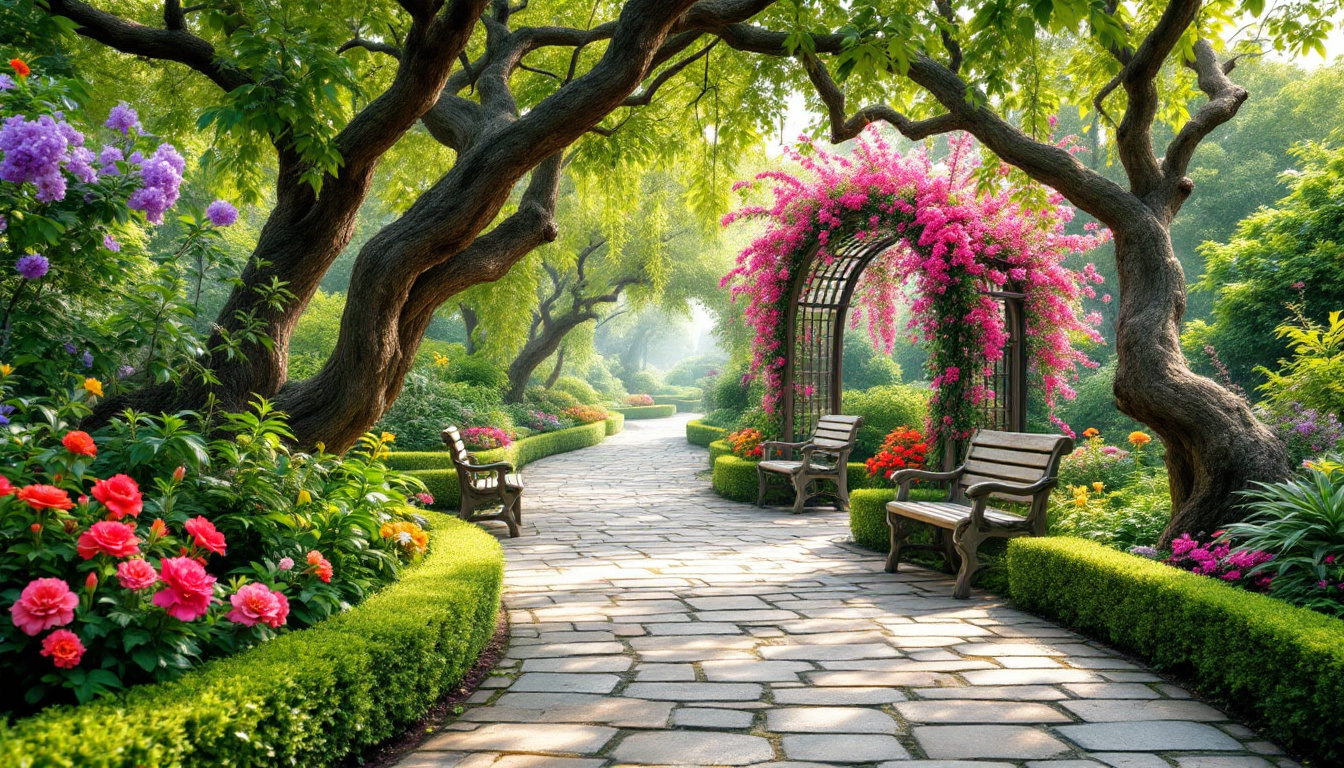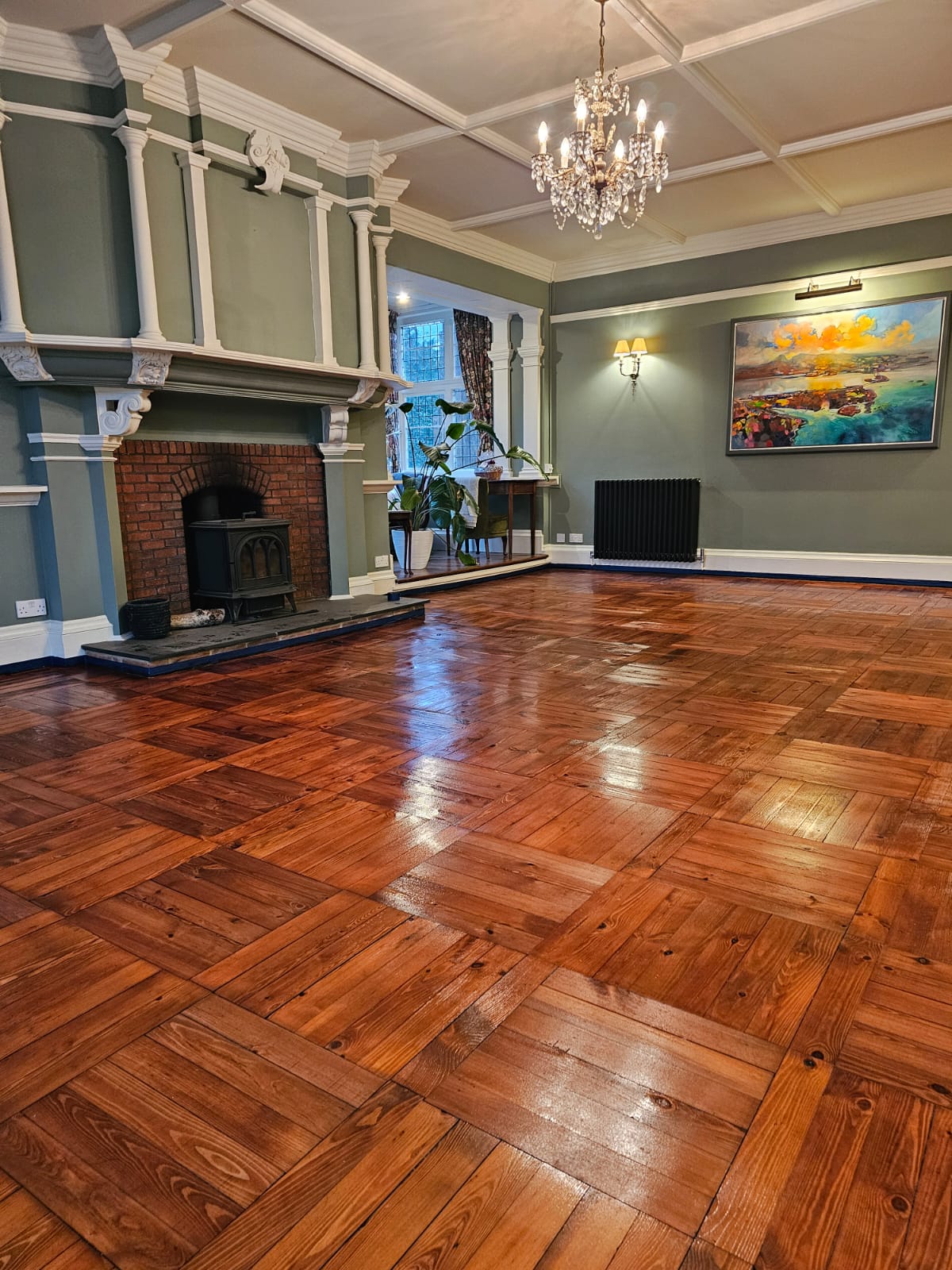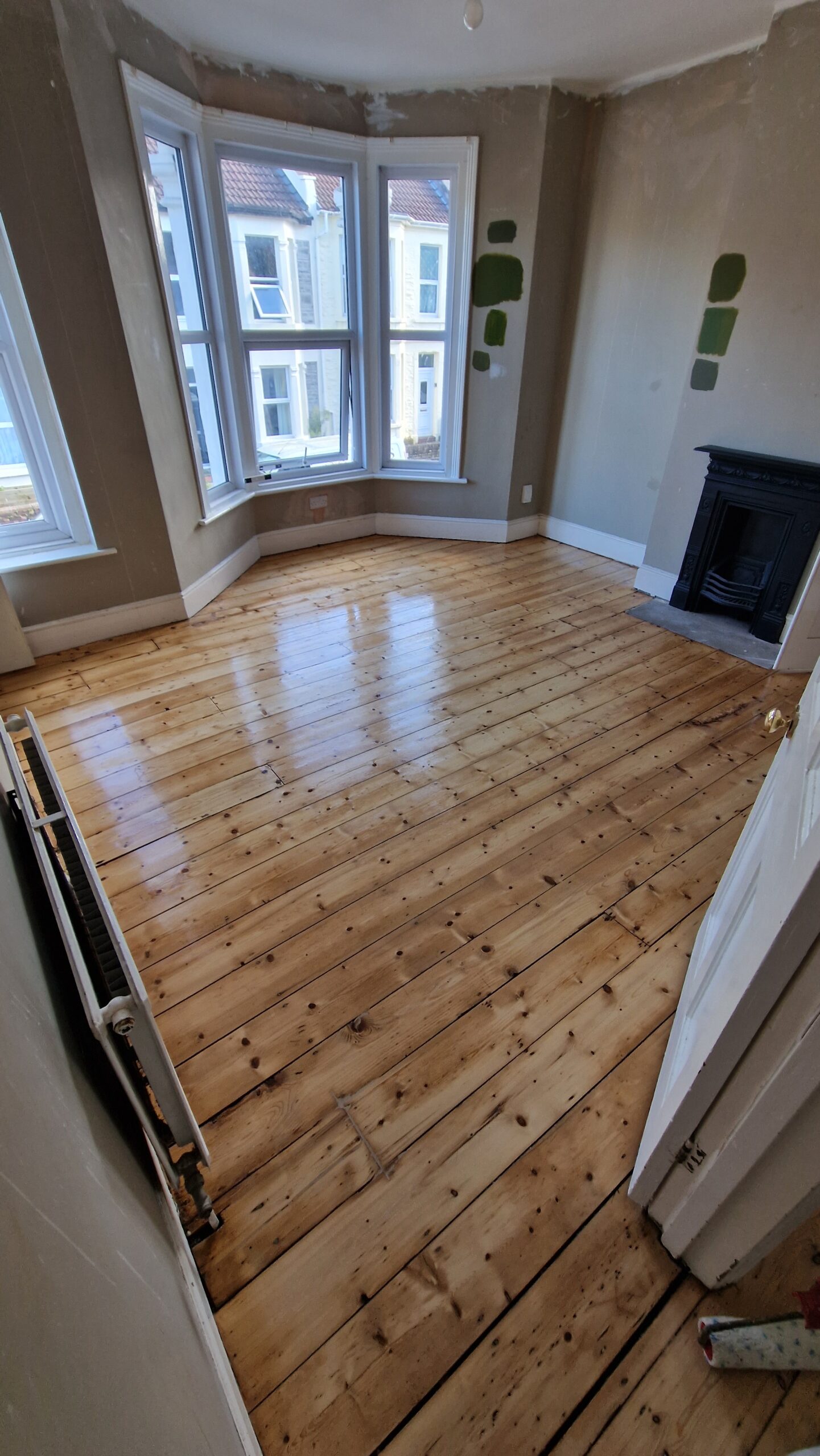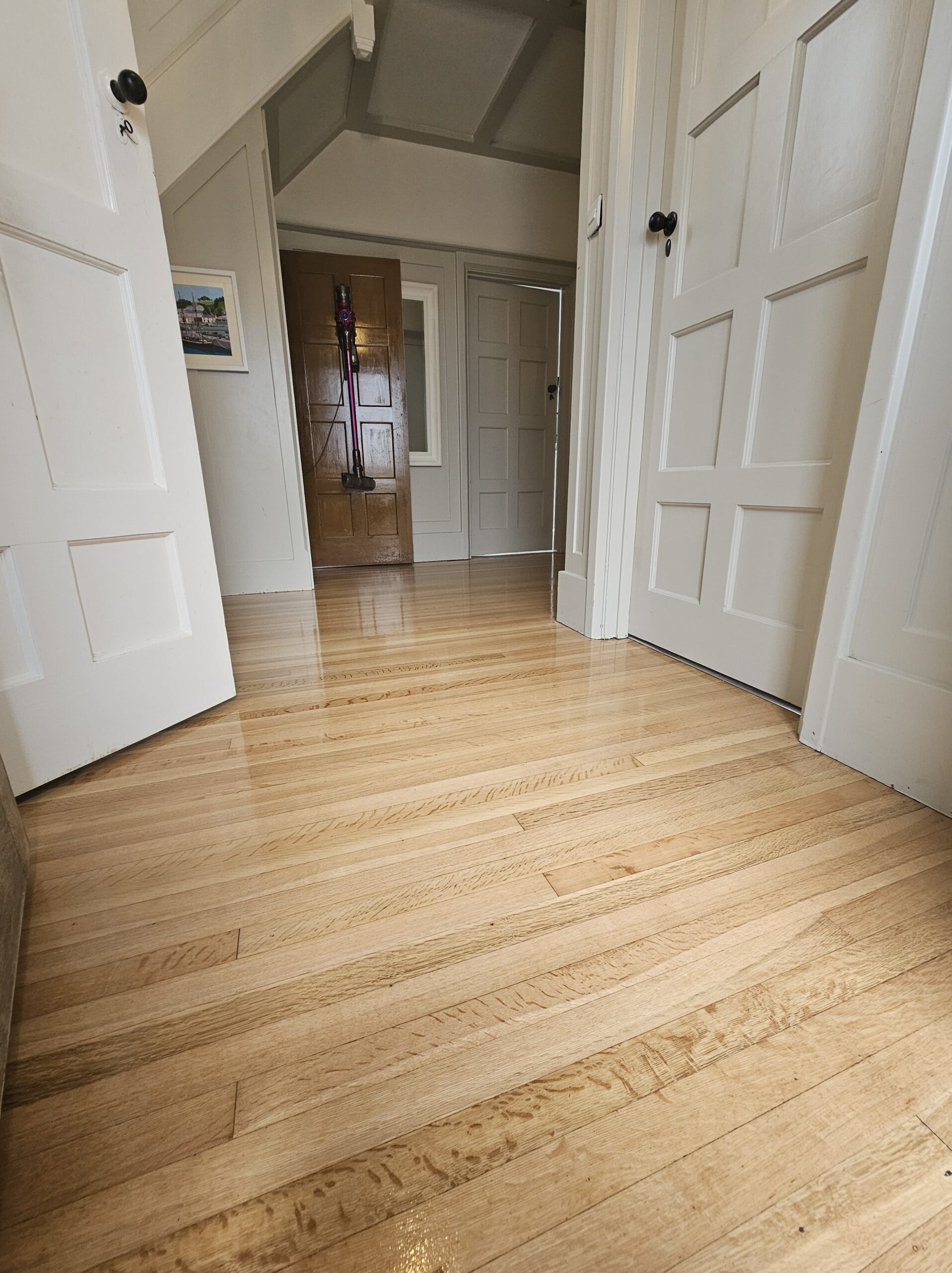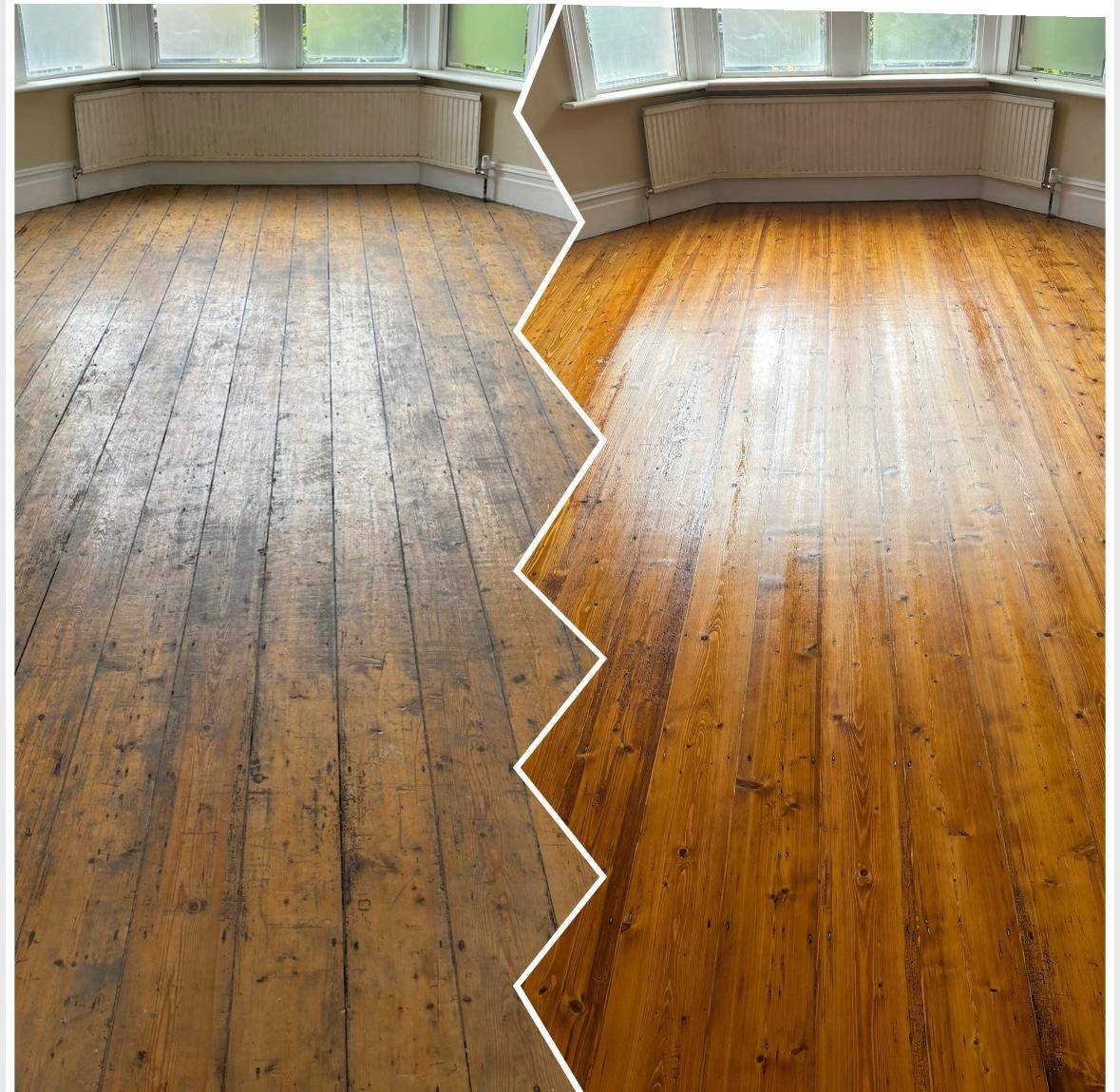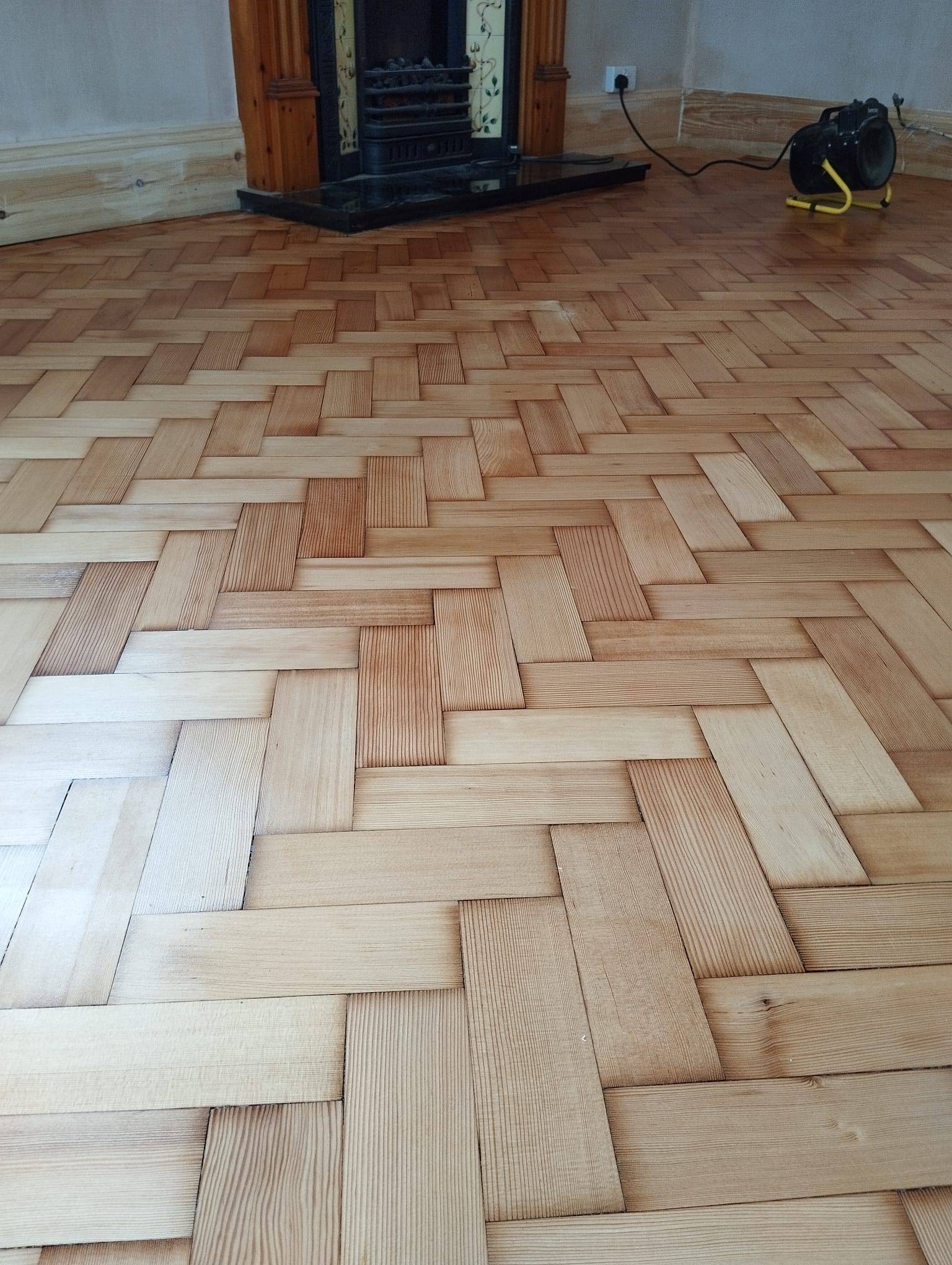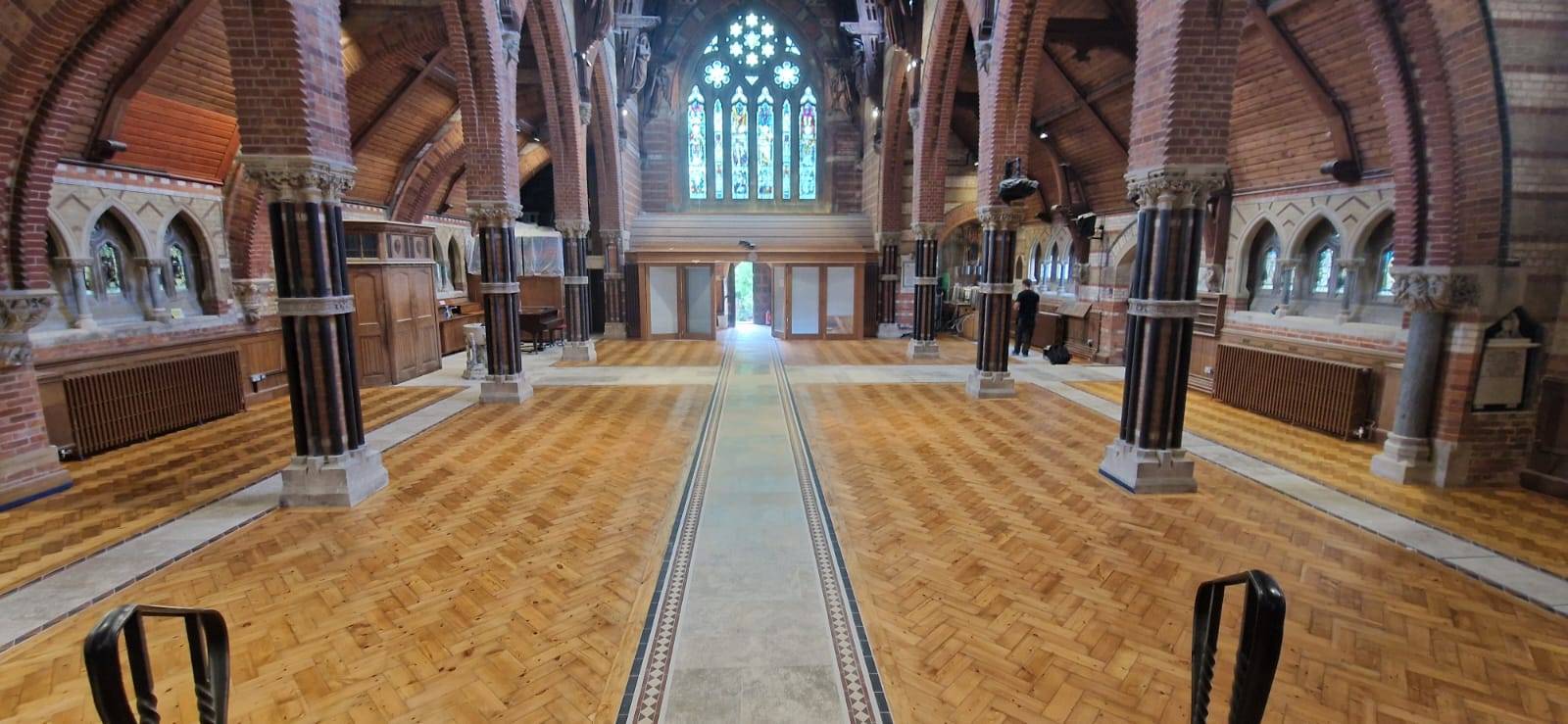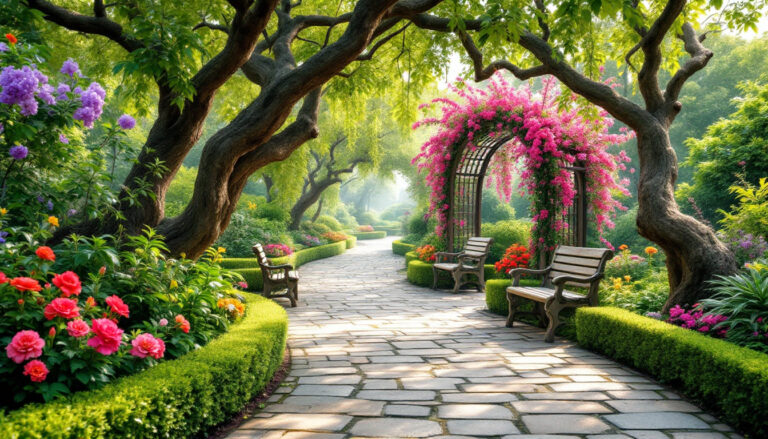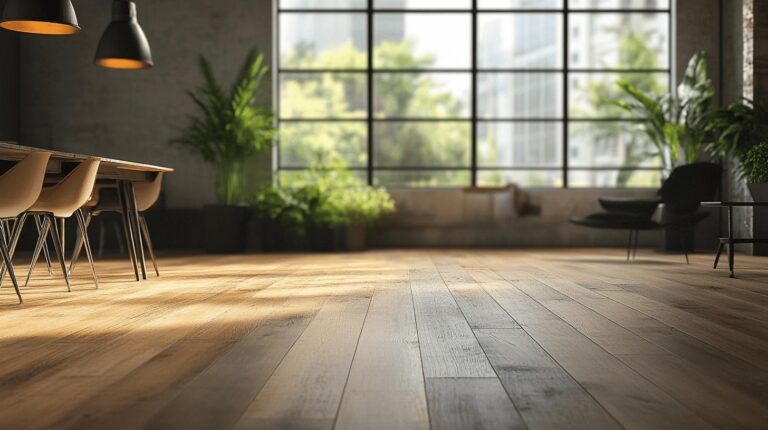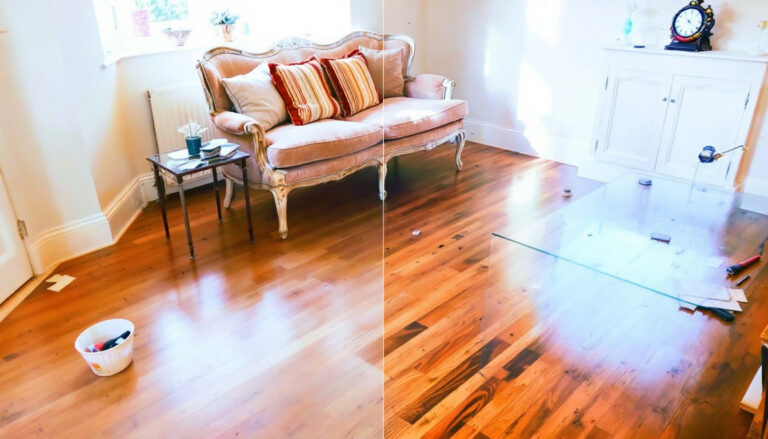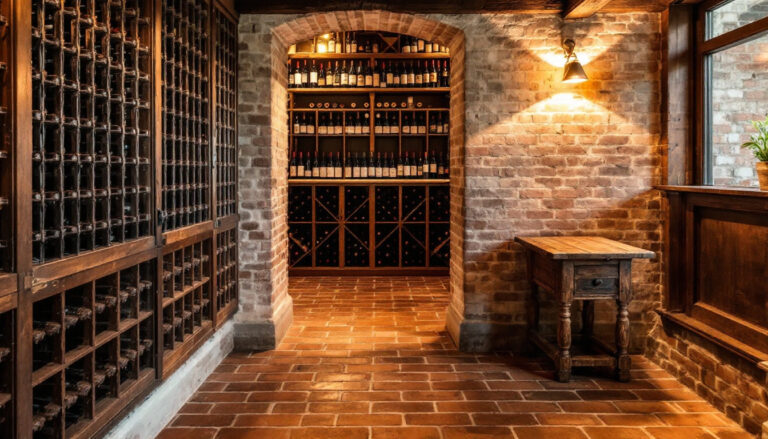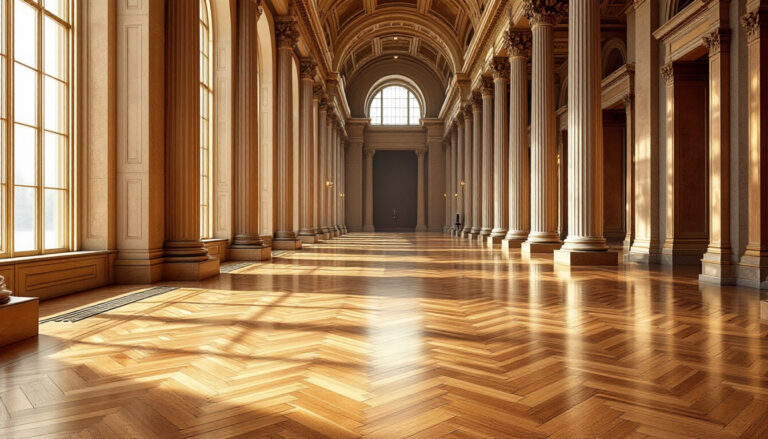Have you ever wandered through a botanical garden and marvelled at how seamlessly the walkways blend with the lush landscape? The type of wood used for these paths can make all the difference, especially in moist indoor environments. Choosing the right wood is not only about aesthetics but also about ensuring durability and resistance to decay. In this article, Ryan’s Restoration delves into the most suitable wood floor solutions for indoor botanical gardens. Discover how woods like teak, cedar, and mahogany provide not just beauty but unparalleled strength and moisture resistance for your garden walkways.
Choosing the Right Wood for Botanical Garden Walkways
Selecting the right wood for indoor botanical garden walkways is crucial due to the high-moisture environment typical of such settings. The wood chosen must be capable of resisting moisture and decay, ensuring longevity and minimal maintenance. Teak, cedar, and mahogany stand out as ideal options due to their inherent properties. Teak is renowned for its durability and requires very little upkeep, making it suitable for high-traffic areas within gardens. Cedar, with its delightful aroma, naturally repels insects, though it might need more frequent maintenance to preserve its appearance and structural integrity. Mahogany offers not only strength and durability but also a rich aesthetic appeal, enhancing the visual allure of the garden. These woods’ natural resistance to the elements makes them superior choices for botanical garden walkways.
- Teak: Durability and low maintenance
- Cedar: Natural insect-repelling properties
- Mahogany: Strength and aesthetic appeal
When deciding on wood for walkways, cost and aesthetic considerations must also be taken into account. While teak and mahogany might carry a higher price tag, their durability and minimal maintenance can offer cost savings over time. Cedar, though potentially requiring more frequent upkeep, provides a distinctive look and aroma that many find appealing. Additionally, the natural grain and colour of these woods contribute to the overall aesthetic, complementing the lush plant life and creating a harmonious garden environment. With these aspects in mind, the selection of wood not only influences the functionality and lifespan of the walkways but also enhances the botanical garden’s visual and sensory experience.
Installation Guidelines for Wooden Walkways
Proper installation techniques are paramount when constructing wooden walkways in indoor botanical gardens. Ensuring the longevity and structural integrity of the walkway hinges on using the right methods. The wood must be treated to resist moisture and decay, a critical factor given the humid environment of indoor gardens. In addition to protection against environmental elements, a well-installed walkway provides safety and enhances the garden’s aesthetic appeal, making it a vital component of the overall garden design.
To prevent moisture buildup, effective drainage and ventilation strategies must be employed. Elevated walkways are advantageous as they facilitate air circulation underneath, reducing moisture accumulation that could lead to wood rot. Incorporating gravel bases beneath the walkways can further aid in moisture management by allowing water to drain away efficiently. These methods not only prolong the life of the wood but also ensure that the walkway remains safe and visually appealing.
Adhering to local building codes and regulations is essential during installation. These codes are designed to ensure safety and compliance with environmental standards. They may dictate specific requirements for walkway elevation, materials used, and structural support. By following these guidelines, installers can prevent potential legal issues and contribute to the sustainability of the garden environment. Ensuring compliance not only guarantees the safety and functionality of the walkways but also supports the garden’s commitment to high standards of design and environmental responsibility.
Maintenance Tips for Botanical Garden Wood Floors
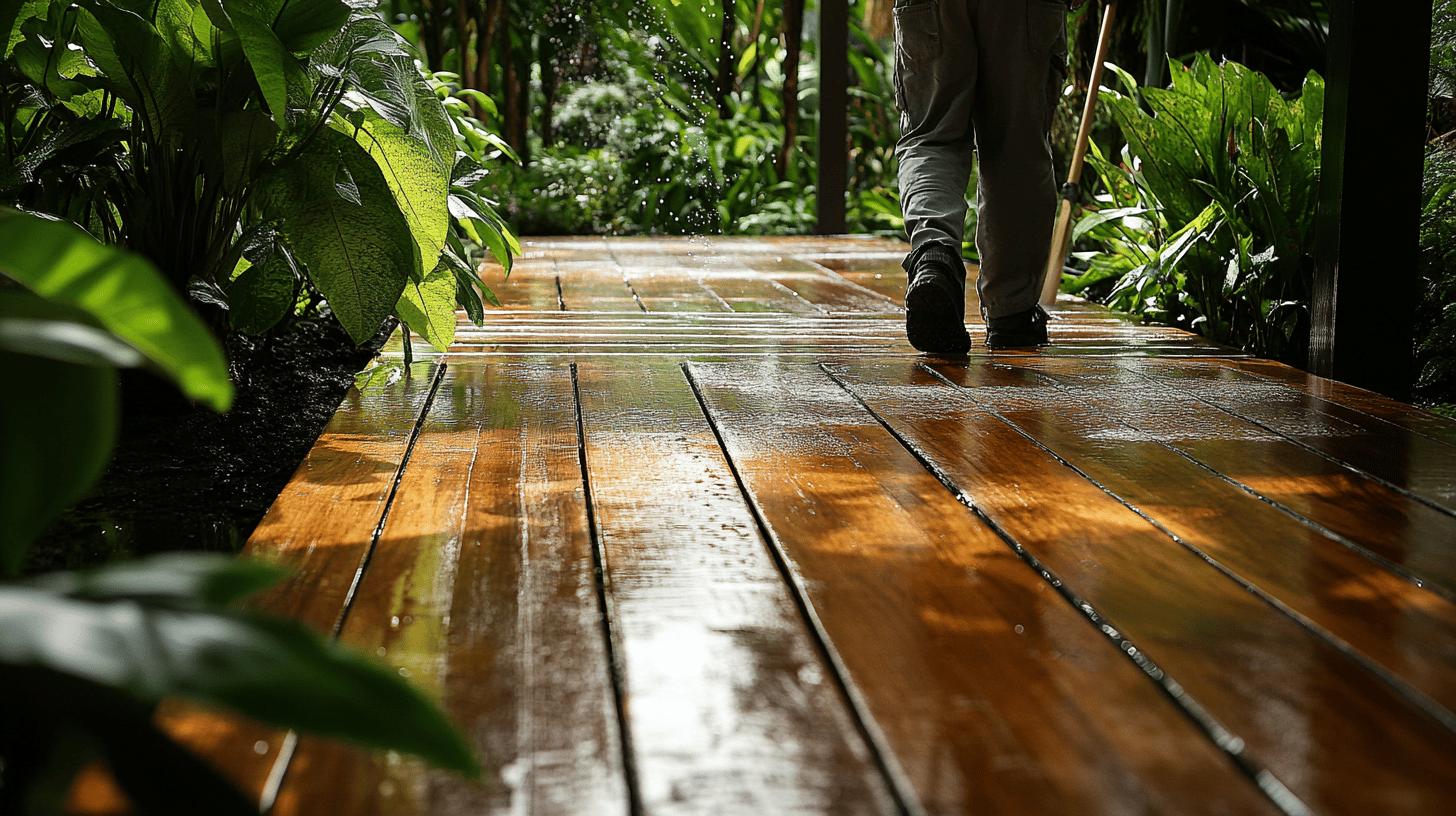
Regular maintenance of wooden walkways in botanical gardens is essential for preserving their longevity and aesthetic appeal. Consistent care helps prevent damage caused by moisture and pests, both of which are prevalent in such high-humidity environments. Sealing the wood surfaces periodically is a critical step in safeguarding against moisture infiltration and rot. In addition to sealing, routine cleaning using non-abrasive methods will help maintain the wood’s natural appearance and prevent scratches or surface wear that could lead to further deterioration. By committing to a regular maintenance schedule, the structural integrity of the walkways is upheld, ensuring they remain safe and visually pleasing for visitors.
- Regular sealing of wood surfaces
- Non-abrasive cleaning methods
- Immediate repair of minor damages
- Use of natural insect repellents
- Monitoring for signs of moisture damage
The long-term benefits of consistent upkeep on wooden walkways are substantial. Regular maintenance not only extends the life of the wood but also reduces the likelihood of costly repairs in the future. Immediate attention to minor damages, such as small cracks or scratches, prevents them from worsening and compromising the walkway’s structural integrity. Employing natural insect repellents helps keep pests at bay without introducing harmful chemicals into the garden environment. Furthermore, vigilant monitoring for signs of moisture damage allows for prompt intervention, preventing potential rot and decay. By integrating these maintenance practices, botanical gardens can ensure their wooden walkways continue to provide a safe, durable, and attractive pathway through the lush plant life, enhancing the overall visitor experience.
Aesthetic and Environmental Considerations
The aesthetics of wooden walkways in botanical gardens play a crucial role in enhancing the overall ambience and visitor experience. Selecting the right wood grain patterns and finishes is essential to create pathways that seamlessly blend with the surrounding plant life. Natural wood tones not only complement the vibrant greenery but also contribute to an organic and harmonious garden environment. A well-chosen aesthetic design of garden paths can transform walkways into visual extensions of the garden’s natural beauty.
When choosing materials for eco-friendly garden floors, consideration should be given to both environmental impact and aesthetic appeal. Selecting wood finishes that are low in volatile organic compounds (VOCs) reduces environmental harm and promotes healthier indoor air quality. Furthermore, opting for untreated or naturally finished woods can showcase the inherent beauty of wood grain patterns, adding an elegant touch to the walkway’s design. Eco-friendly choices often lead to a more sustainable and visually appealing garden path, supporting both ecological and aesthetic goals.
Sustainable sourcing practices are paramount when selecting wood for botanical garden walkways. Utilising wood from sustainably managed forests ensures that the materials are harvested responsibly, reducing ecological damage and supporting conservation efforts. Reclaimed wood presents another viable option, offering a unique character and history while minimising the demand for new timber. By prioritising these practices, gardens can maintain their commitment to environmental stewardship, all while providing aesthetically pleasing and durable walkways for visitors to enjoy.
Case Studies: Successful Botanical Garden Walkways
Case studies of botanical gardens demonstrate the effective integration of wooden walkways with plant displays, creating a cohesive and immersive visitor experience. These examples often highlight the use of wooden walkways to seamlessly blend with the natural setting, enhancing the overall aesthetic appeal of the gardens. By examining real-world installations, garden designers can draw inspiration and practical insights for implementing similar solutions in their own projects. The creative designs showcased in these case studies illustrate how walkways can serve as more than just functional paths but as integral components of the garden’s layout that elevate the visual and sensory experience.
Key takeaways from these case studies include the use of specific wood types chosen for their durability and aesthetic compatibility with the garden environment. The design highlights often include innovative approaches to integrating walkways with plant displays, such as using the natural contours of the landscape to guide the paths or incorporating features like benches and planters to enhance functionality and comfort. These successful installations demonstrate the potential of wooden walkways to not only support the physical flow of visitors but also to complement and enrich the botanical displays.
| Garden Name | Wood Type | Design Highlight |
|---|---|---|
| Kew Gardens | Teak | Curved pathways following natural landscape |
| Royal Botanic Garden Edinburgh | Cedar | Integrated seating and planter boxes |
| Singapore Botanic Gardens | Mahogany | Elevated walkways for canopy viewing |
Ryan’s Restoration: Expert Solutions for Wooden Walkways
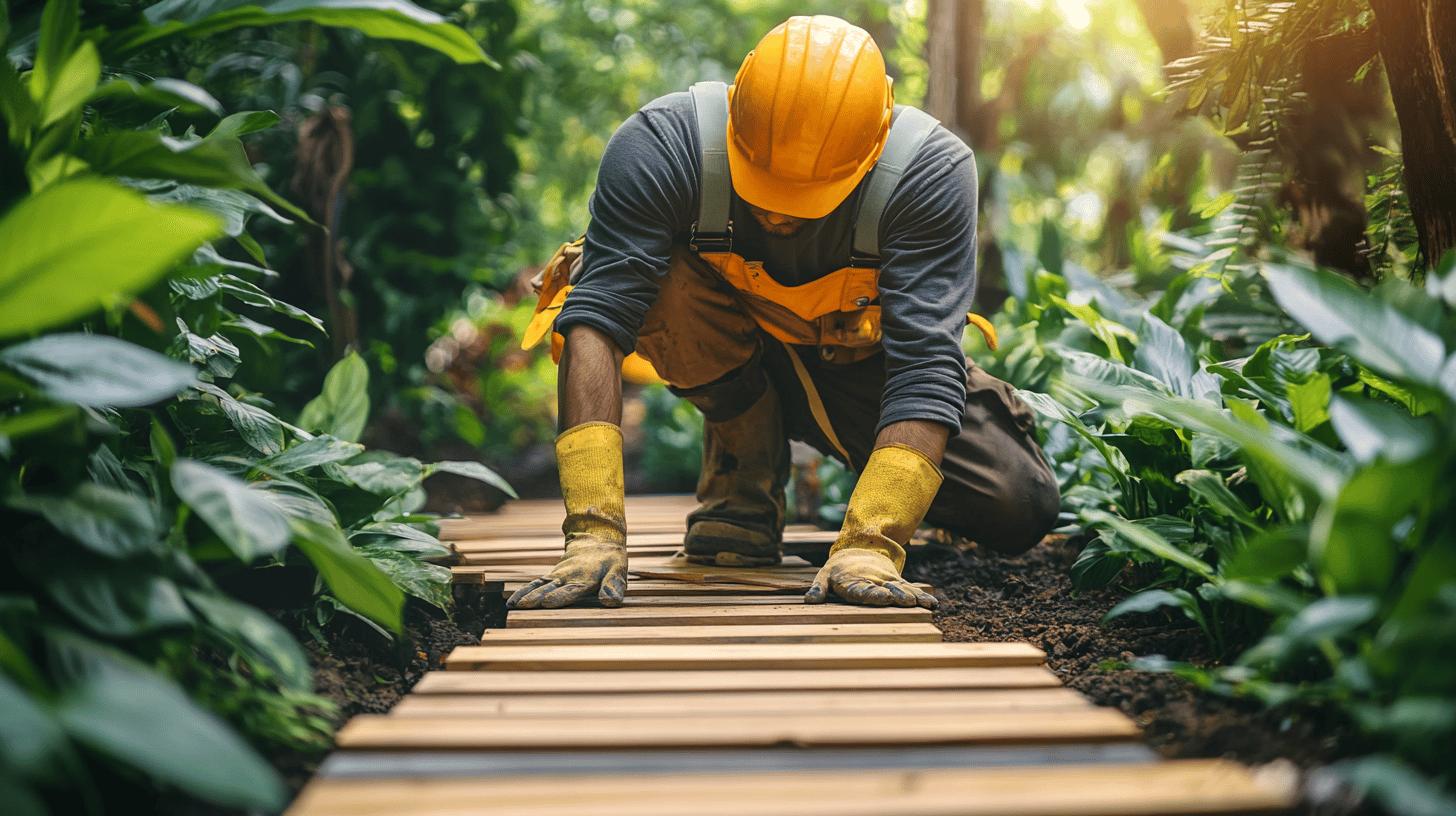
Ryan’s Restoration is a leader in providing expert solutions for the installation and maintenance of wooden walkways, particularly within the unique environment of indoor botanical gardens. Their commitment to quality and sustainability sets them apart as a recommended provider in this specialised field. With a deep understanding of the challenges posed by high-moisture areas, they offer a range of tailored services to ensure the longevity and aesthetic appeal of wooden walkways. Utilising their extensive experience, Ryan’s Restoration provides professional advice and custom design consultations, ensuring that each walkway is both functional and visually integrated with the garden’s natural beauty. Their dedication to sourcing sustainable materials further underscores their commitment to environmental stewardship, while their professional installation services guarantee adherence to the highest safety and design standards. Comprehensive maintenance packages are also available, helping to preserve the walkways’ condition and appearance over time.
- Custom design consultations
- Sustainable materials sourcing
- Professional installation services
- Comprehensive maintenance packages
Final Words
Choosing the right wood for botanical garden walkways requires careful consideration of durability, moisture resistance, and aesthetic appeal. Selecting between teak, cedar, and mahogany provides options catering to different priorities.
Proper installation and regular maintenance elongate the wood’s lifespan and preserve its beauty.
Attention to environmental and aesthetic considerations ensures a harmonious integration with the garden’s natural setting.
Case studies demonstrate successful walkway implementations that highlight design potential. Professional services from Ryan’s Restoration offer expertise in optimising wooden walkways for indoor gardens. By considering these important factors, one can achieve beautiful and lasting wood floor solutions for botanical garden walkways.
FAQ
Q: What are the best wood options for indoor botanical garden walkways?
When selecting wood for indoor botanical garden walkways, choose teak, cedar, or mahogany. Teak offers durability and low maintenance, cedar has natural insect-repelling properties, and mahogany provides strength and aesthetic appeal.
Q: How do you install wooden walkways to prevent moisture issues?
Proper installation involves using treated wood and ensuring adequate drainage and ventilation. Elevated walkways or gravel bases help prevent moisture buildup. Consider local building codes for compliance and safety.
Q: What is the cheapest material for building a walkway?
Gravel is considered one of the cheapest materials for building a garden path. It is affordable and simple to install, offering a versatile option for budget-conscious projects.
Q: How do you make an affordable garden path?
To create an affordable garden path, use materials like gravel or mulch. These options are economical and provide a natural look, which is ideal for budget-friendly landscaping projects.
Q: What are some ideas for a wooden garden pathway?
Wooden garden pathways can include variations such as raised walkways, ground-level paths, or curved designs to integrate with the garden layout. Each design enhances the scenic value while catering to practical needs.
Q: How do you build a raised wooden walkway?
Building a raised wooden walkway involves constructing a supportive framework, usually with posts and beams, to elevate the path. This design aids in improving drainage and reducing water damage.
Q: What are some maintenance tips for wooden walkways?
Regular sealing, non-abrasive cleaning, immediate repairs, natural insect repellents, and moisture monitoring are key maintenance tips. Consistent upkeep extends the longevity and appearance of wooden walkways.
Q: What should be considered for the aesthetics and environmental impact of wooden walkways?
When considering aesthetics and environmental impact, select wood grains and finishes that harmonise with plant life and source wood sustainably. Using reclaimed or sustainably managed forest wood adds ecological value.
